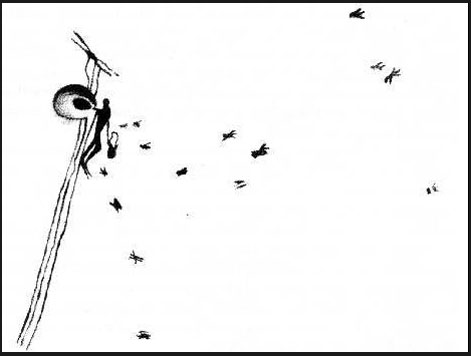Okay, so many of you might be wondering about sustainable living...just what does that term mean? Well, aside from getting into a deep conversation, I'll sum it up by saying, sustainable living is in part about returning material to the earth . So what does that mean, exactly? It means, for us, that we use a simple composting toilet. By not using water to wash away bodily waste, we save water. By composting, we gain a valuable agricultural resource that will feed our soil. Look, I did A LOT of research in regards to what kind of waste management our homestead would use. It because clear that septic tanks were out of the question, as they are dependent on 1) a truck that comes and pumps the tank and 2) great amounts of water to "flush" the waste into the tank. Having neither A nor B, I went on to research alternative waste management systems. Lo and behold, there is a great amount of literature on compost toilets, and especially for the Pacific islands (in 'Uiha we are a low lying atoll) composting is the best waste management system. Thus, I began to research compost toilets. Commercial models tended to be very expensive and out of our range (like $1,500 +) and so we began to look at a basic compost toilet that we could make and maintain ourselves. Our main resource in designing our compost toilet, was a book, The Humanure Handbook, by Joe Jenkins (its available online at
www.humanurehandbook.com). We built the humanure bin out of excess coconut wood (the top part that wasn't used for building):
 |
| Pops checking our our handiwork |
The idea of humanure composting is to have a cover material - we use coconut sawdust - and instead of "flushing", one "covers".
 |
| Cover Material |
We use movable 5-gallon buckets covered with a toilet seat, and have a bag of sawdust next to it. Every use, cover the shizit with a good layer of sawdust. When the bucket fills up, take to the composting bin, and build up your pile of soon-to-be fertilizer. Once again, the key to the bin is cover material. We have placed the bin underneath a lou'akau tree (lauhala tree in Hawai'i), and thus, we have ample cover material to use in the bin (to cover the whole steaming pile of poo) by gathering the fallen lou'akau leaves.
 |
| Lou'akau Tree |
By the way, the lou'akau leaves are what's used in weaving various mats - in green form, and then processed through soaking in ocean and boiling in water, then drying....really fascinating. Anyways, the point of this blog is to share these photos and tell you how non-smelly a compost toilet is. If you've never tried it, don't knock it cuz it feels good knowing that every time I sit on the throne...its like putting money in the bank...and I LOVE me some money, or at least knowing I am helping save the planet. The irony of us doing this compost toilet, is that the rest of the village (100 households) is currently in the process of installing septic tanks and water toilets. Turns out that the Makamaile Group - an organization made up of overseas 'Uiha people - came up with the *bright idea* of "developing" and "helping" 'Uiha out by installing septic toilets. Might I remind you that 1) there is absolutely no "pumping service" here and that 2) the septic tank is totally dependent on pumping. So what is now happening is that the septic tanks being installed will have NO concreted bottom to the tank - and hence, the waste and the effluent wastewater will be traveling very quickly directly into the shallow water table - likely causing contamination to 'Uiha source of running water; and will likely cause pollution of the shoreline and reefs, causing certain seafoods to succumb to the presence of algae and bacteria from the septic tank discharge. This is TERRIBLE, of course, and yet it is ironic because there is very little we - the land stewards of Motuha - can do. We held a public discussion earlier this year - to little affect. The feeling amongst the villagers is that its already in motion - and nobody wants to stop the process. Not to mention the fact that the overseas group Makamaile fundraised about $400,000 a couple years back and this is what they've chosen to spend it on, and NO ONE is kicking up a fuss....and all are complicit....anyways, the reason Makamaile suggested to do this project? Because allegedly they didn't want to have their kids have to use the "tongan toilets" (the pit latrines) when they came and visited from America, etc.....ugh. So, yes its ironic and tragic and well, frustrating. Pops and I even went and made a formal visit to the Noble Malupo when he was in town a few months back - Pops preached a bit about the evils of septic tanks and warned of the effect down the line for future generations - and Malupo said he would get in touch with the Environment Department to see if an environmental impact statement could be requested from Makamaile. Next thing we know, a boat rolls up and the whole village is out there unloading white toilets and having a grand ole time.

















































